3D Printing Industry News Sliced: Farsoon Technologies, Rize, Titomic, 3D Systems, Formlabs, Protolabs, Dassault Systèmes
miniFactory Makes FDM Specific Technical Datasheets with Validated Materials for PEI and PEKK
Headquartered in Finland, miniFactory‘s progression toward offering high-performance FDM materials for users around the world, they are making significant strides toward making it easier to fabricate not just prototypes but also real end-use parts.
![]() Recently, the miniFactory team released technical datasheets corresponding to parts fabricated on the miniFactory Ultra 3D printer, validating materials along with showing the repeatability of the process and real-life applications. As research and development progressed, they realized how critical it is for end-use parts to receive material validation but that should be printer specified, requiring the team to perform mechanical tests for the ultimate optimization for every material produced. The company now has three validated materials that along with the datasheets and corresponding settings should lead to repeatable results and predictable mechanical properties in parts. The company has released these Sabic ULTEM AM1010F filament, Sabic ULTEM AM9085F filament and PEKK-A made by Kimya from Kepstan PEKK by Arkema.
Recently, the miniFactory team released technical datasheets corresponding to parts fabricated on the miniFactory Ultra 3D printer, validating materials along with showing the repeatability of the process and real-life applications. As research and development progressed, they realized how critical it is for end-use parts to receive material validation but that should be printer specified, requiring the team to perform mechanical tests for the ultimate optimization for every material produced. The company now has three validated materials that along with the datasheets and corresponding settings should lead to repeatable results and predictable mechanical properties in parts. The company has released these Sabic ULTEM AM1010F filament, Sabic ULTEM AM9085F filament and PEKK-A made by Kimya from Kepstan PEKK by Arkema.
“To maintain the high repeatability that miniFactory Ultra 3D printer has, miniFactory is using certified materials,” shared the team in a press release sent to 3DPrint.com. “These materials provide full traceability and quality control for the end user.”
“To be able to trust on the 3D printed part to be used in real life applications, it is crucial to know the mechanical properties of the print. This can be done only with repeatable process which is known. To achieve the demanded repeatability, the process needs to be stable. In order to achieve desired results in everyday use, the process needs to meet the validated parameters. These parameters are based on using a specific validated printer, optimized printing profiles and validated materials. By following the process, the customer can achieve the mechanical properties shown in the technical datasheets. By changing any of these three parameters, the process changes and the printed part might not match the technical datasheet.”
Each test for validating materials, parts, and printing profiles along with the resulting mechanical properties can be announced in a technical datasheet—several of which have been released with their press release.
The concept of using technical datasheets with each test is a trend that should be continued as these documents contain critical information that mechanical designers can use as helpful tools for identifying mechanical properties—an area of study that is key for so many users involved in 3D printing today as different hardware and materials may impact mechanical properties or different parameters may be required for specific projects. The datasheets are made according to the relevant ASTM standard and the material and 3D printing profiles that let you have repeatable results was a “long process” according to the firm.
“Until now, this has not been possible since the datasheets on the market are based on injection molded parts, or the datasheets have not been available at all,” stated the miniFactory team in their press release. “Values of injection molding are not valid when the part is created using 3D printing. This fact has had too little attention by the 3D printing industry and miniFactory wants to bring it to the spotlight.”
Their main goal continues to be providing 3D printers with reliable, repeatable processes. The developers at miniFactory are achieving this mission through offering comprehensive traceability of the 3D printing filament with technical datasheets—making certain that end-use parts are fabricated with quality, suitable mechanical properties, and the necessary durability. Find out more about this ongoing process regarding technical datasheets from miniFactory here.
MiniFactory has played a part in the 3D printing industry since 2013 and unveiled their own new 3D printers last year. What do you think of this 3D printing news? Let us know your thoughts! Join the discussion of this and other 3D printing topics at 3DPrintBoard.com.
[Source / Images: MiniFactory]
The post miniFactory Makes FDM Specific Technical Datasheets with Validated Materials for PEI and PEKK appeared first on 3DPrint.com | The Voice of 3D Printing / Additive Manufacturing.
3D printing news Sliced: Modix, CRP Technology, OpenAdditive, Florida Makes, Polymaker
2019 Enterprise 3D Printer of the Year (Polymers): the Wildcard Update
Minifactory Releases the Minifactory Ultra High Temperature Printer for PEEK and PEI at the TCT Show
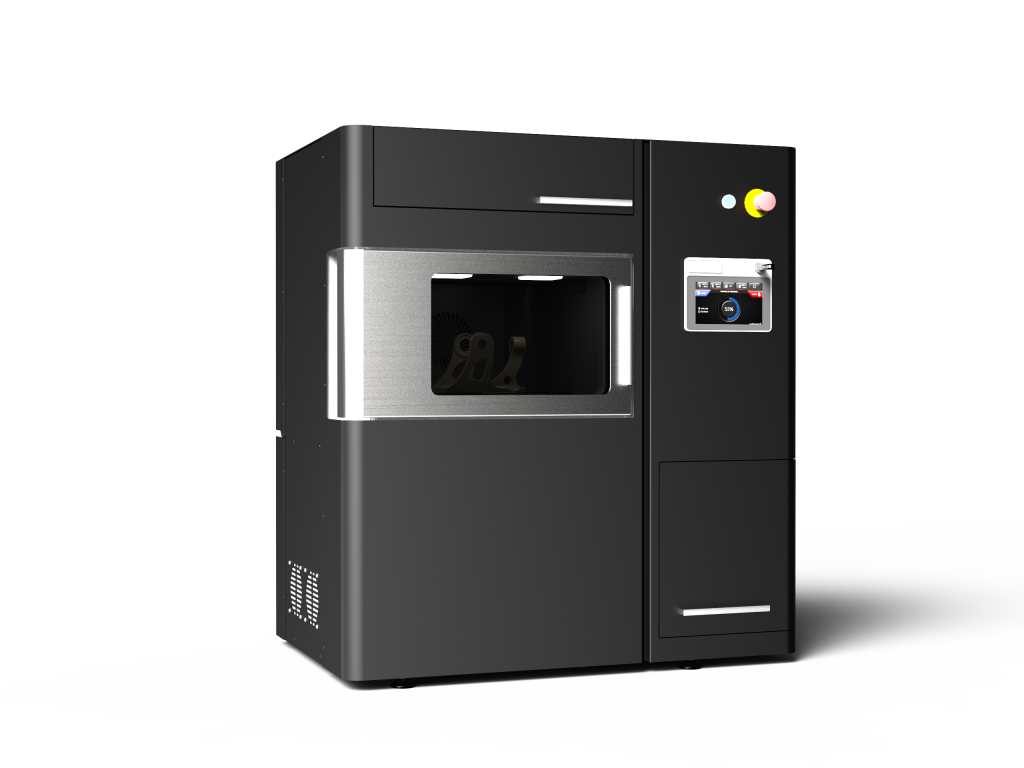
Fins have this concept called Sisu. Sisu is a kind of hail mary pass, fatalistic almost, belief in one’s own toughness, resilience and survivability in the face of adversity. It’s kind of a gritty gumption with a side of never give up. Its this inner strength that shines through in what Minifactory does. Minifactory is a small but dedicated team of 3D printer builders in Finland. They’ve got Susi in spades. Often confused with MyMinifactory this one is not a download site but a builder of some of the world’s best high-temperature printers. The team is now releasing the Minifactory Ultra.
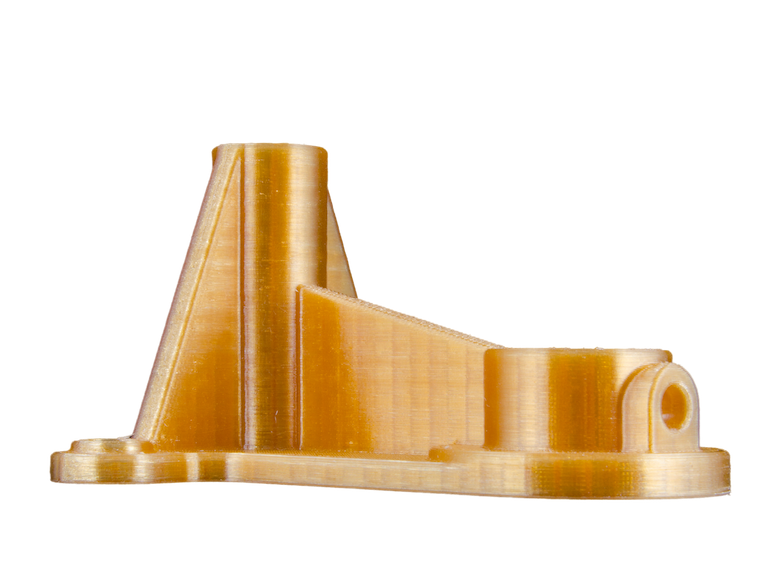
A Minifactory Ultras part in PEI (Ultem)
The Ultra is a new high-temperature 3D printer optimized for PEEK, PEI, PEKK and other ultra-high-performance materials.
- The printer has a 330 x 180 x 180mm build volume.
- Nozzle temperature can go up to 480°C
- Chamber temperature of up to 250°C
- Servo motors instead of steppers.
- An on-board annealing system so you can post process and strengthen your parts on the machine.
- Fully automated calibration
- Two independent extruders
- Seven-inch touchscreen
- A vacuum table print bed so that print sheets can easily be added to it or removed.
- Carbon filters.
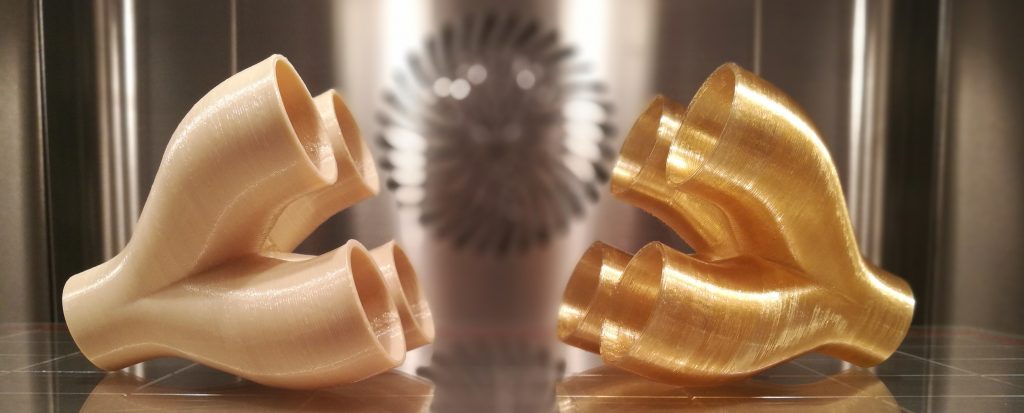
A PEI part as it comes off the printer right, and once its annealed left.
The 100 x 80 x 100cm printer is a proper industrial device that displays good build quality. The parts that come off of it are very high quality. It is extremely difficult to 3D print PEEK. The material is difficult to process and one can get lots of issues with trying to obtain crystallization and build a part. Many 3D printers essentially ‘wick’ heat with a lot of heat flowing out of the chamber during builds. Operators and OEMs solve this by raising the nozzle temperature higher and higher. This is akin to you putting your oven on high in order to try to heat your house. Therefore many PEEK parts fail due to the temperature being too high or there being insufficient thermal control over the chamber. By focusing on good thermal management and thermal control Minifactory seems to have solved many of the issues affecting PEEK prints.
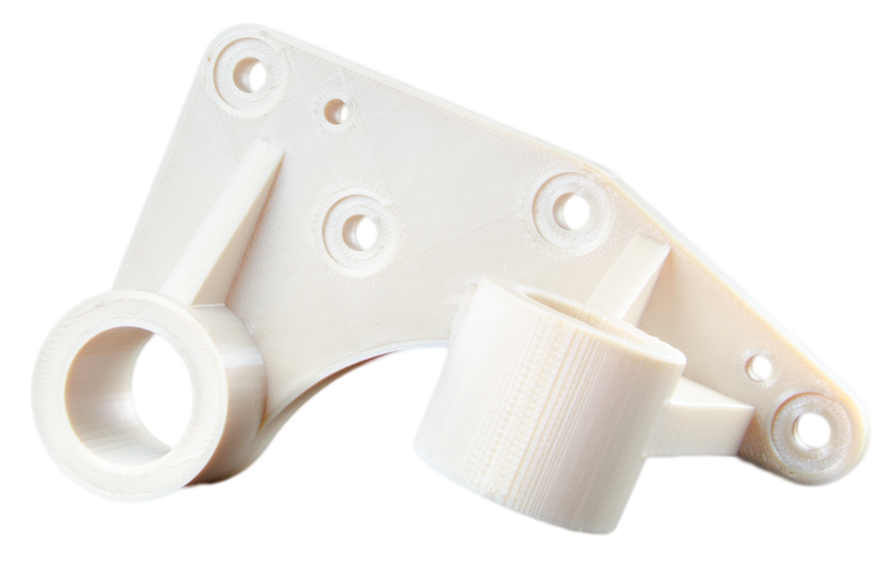
A Minifactory 9085 Ultem part
Another issue is that incomplete or improper crystallization can lead to poor part performance. This they seem to be actively trying to solve. By optimizing the machine so that it can anneal on the machine itself users can bake their parts after printing to improve the results. This removes a handling step and would be easier for operators but at the same time is not super optimal in machine utilization. The fact that they’re focussing on this though means that they understand the needs of their customers. Annealing itself is a controlled heating of the part so that stress is relieved this then can combat warping, dimensional issues and improve physical properties of parts.
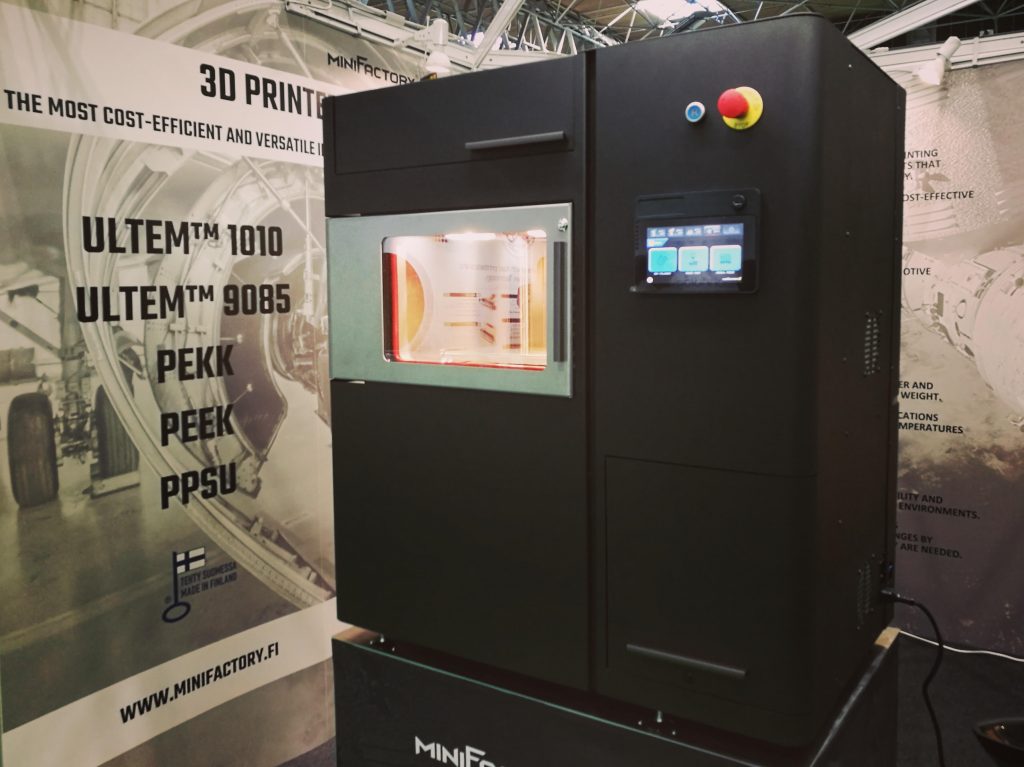
The Minifactory Ultra
Sales and marketing director Olli Pihlajamäki told us
“miniFactory is an industrial 3D printer manufacturer driven by passion for ultra-polymers and the best results for industry class 3D printed parts. miniFactory Ultra is our third endeavor into 3D printing. A culmination of our years of experience, industry know-how and our perfected madness for 3D printing.”
“Biggest advantage in the miniFactory Ultra is the real capability to 3D print ultra-polymers with high strength without warping. It’s possible with the heated chamber up to 250 celsius. ULTEM (PEI), PPSU and other amorphous polymers require printing chamber temperatures above the polymers glass transition temperature (Tg). Tg is one of the most important thermophysical properties of amorphous polymers. In that temperature, polymer chains are oriented randomly and have freedom to move and polymer is in structural relaxation and cools down smoothly and evenly. From there comes the strength and dimensional accuracy to our printed ultra-polymer parts.”
“PEEK, PEKK and other semi-crystalline polymers require a really sensitive printing process for optimal crystallization. For that the Ultra has unique integrated and automated annealing system which means that after a print job, the machine calculates and perform the optimal annealing process for semi-crystalline polymer parts. High quality servo motors in all axes takes care of the printing accuracy.”
Only a few years ago high-temperature desktop 3D printers didn’t exist. Now there is an expanding and growing market of credible working machines that are being used to test and make parts in some of the most high-performance materials in the polymer world. The potential market for these things is huge with many companies turning to these materials to replace metal, lightweight things and make implants. I personally believe that these kinds of systems are the future. A system that is accurate and has good thermal control and management will print any material well. Carbon filter, servos, linear guides and annealing are all features that I want on my home machine too. $45,000 is far away from the RepRap kits we started with but it’s not a lot of money if it prints high-performance parts reliably for business users. The Minifactory Ultra is available now at minifactory.fi and if you’re in Birmingham for TCT, then they’re at J18.





